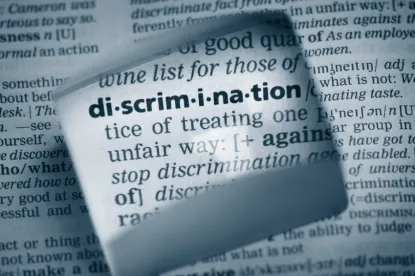Many employees who are let go or terminated from employment don’t know what happens at work once they’re gone. Sometimes employees know or subsequently learn, whether through word of mouth, social media platforms such as LinkedIn, or the employer’s website, that they have been replaced. Sometimes their replacement is someone significantly younger, yet it is unclear exactly how old the replacement is. In a recent ruling, the Third Circuit has held the lack of knowledge doesn’t matter, at least not at the pleading stage of the litigation.
As we all know, employees over the age of 40 are protected from age discrimination in employment under the federal Age Discrimination and Employment Act of 1967 (“ADEA”) and most state analogs. In other words, it is unlawful for an employer to take adverse employment action against, fire, or refuse to hire an employee on the basis of his or her age. Generally, to prevail on an age discrimination complaint, an employee must demonstrate (i) he or she is at least 40 years old, (ii) but for his or her age, the employer would not have fired (or refused to hire) him or her, and (iii) he or she was replaced by (or passed over in favor of) someone else who was sufficiently younger, thus illustrating a discriminatory motive. When the replacement is under the age of 40, the prima facie case is immediately satisfied. However, it is well-settled that the discrimination can occur even where the aggrieved employee and his or her replacement both are over the age of 40. Therefore, where a plaintiff employee does not know how old his or her replacement is, the employee often will allege a “significant age difference” to establish a prima facie claim of ageism in his or her complaint.
In the recent precedential decision of Martinez v. UPMC Susquehanna, the United States Court of Appeals for the Third Circuit dealt squarely with this issue and held that, at the pleading stage, an age-discrimination plaintiff does not need to know his or her replacement’s exact age. Instead, in the absence of that knowledge, the plaintiff may allege a significant age difference, and that specific information (the actual age difference) can come out through the course of discovery. In this specific case, a 70-year-old orthopedic surgeon was fired on the basis that the medical center was “moving in another direction and his services were no longer needed.” Dr. Martinez was told the firing “had nothing to do with his performance.” Soon after his firing, the hospital hired two new doctors, who, according to Dr. Martinez’s complaint, were “significantly younger,” “less qualified,” and “less experienced” than him. Dr. Martinez brought suit for age discrimination under the ADEA and Pennsylvania Human Relations Act (PHRA). The trial court granted the hospital’s motion to dismiss on the basis that Dr. Martinez’s allegation that his replacement was “substantially younger” did not satisfy the applicable pleading standards.
On appeal, the Third Circuit disagreed. Citing the applicable pleading standards and expressing “the complaint need only allege enough facts to raise a reasonable expectation that discovery will reveal evidence of each necessary element,” the Third Circuit held the phrase “significantly younger” is a factual allegation that sufficiently alleges a prima facie case and opens the door to discovery on that fact issue. The court went on to express that “the replacements’ exact ages are not ultimate issues or even legally mandated elements,” and “no minimum age gap is needed to find the replacement ‘sufficiently younger.’” According to the court, the complaint, which alleged Dr. Martinez was over the age of 40, qualified for the job, fired, and that his replacements were “significantly younger,” less qualified and less experienced, was sufficient to state a plausible age-discrimination claim at the outset of the case. The court held the complaint did enough to put the defendant medical center on notice of the claim, and discovery either would substantiate or undermine those allegations. Thus, the case was allowed to continue.
This is an important ruling for employees and employers alike. For employees, the court’s ruling makes clear that the employee need not know the precise age of, or age difference with, his or her replacement to prosecute a claim of ageism. Rather, according to the Third Circuit, where a good faith basis exists to allege a substantial age gap, the plaintiff may pursue the claim and take discovery on that factual issue. In other words, the court has opened the doors to discovery and will not bar a plaintiff employee from pursuing his or her age discrimination claim where the employee lacks precise knowledge of these operative facts.
For employers, the court’s ruling could signal more litigation on age discrimination claims. Employees who suspect they may have an age discrimination claim but don’t know or don’t have access to specific information concerning their replacement – such as their replacement’s age – can use the court’s ruling as a vehicle to obtain discovery on a potentially meritless claim (so long as they have a good faith basis for proceeding with the claim) Employers also should carefully consider the reasons for terminating an older employee before executing the decision. Furthermore, employers should consider sharing those reasons for termination with the employee rather than relying on more generic responses, such as “it’s not a good fit” or “we’re moving in another direction,” which can be perceived as being pretextual. In addition, employers might entertain offering separation pay, even in the absence of a formal severance plan or policy, to older employees being let go without just cause to prevent against claims of age discrimination. Even where no viable claim exists, defending against a discrimination claim can be incredibly costly for employers in terms of time, aggravation and expense. In short, given the court’s ruling, employers must take the necessary steps to protect themselves against age discrimination claims that can be raised from even the most threadbare fact patterns where a “significant age difference” exists.


 />i
/>i

